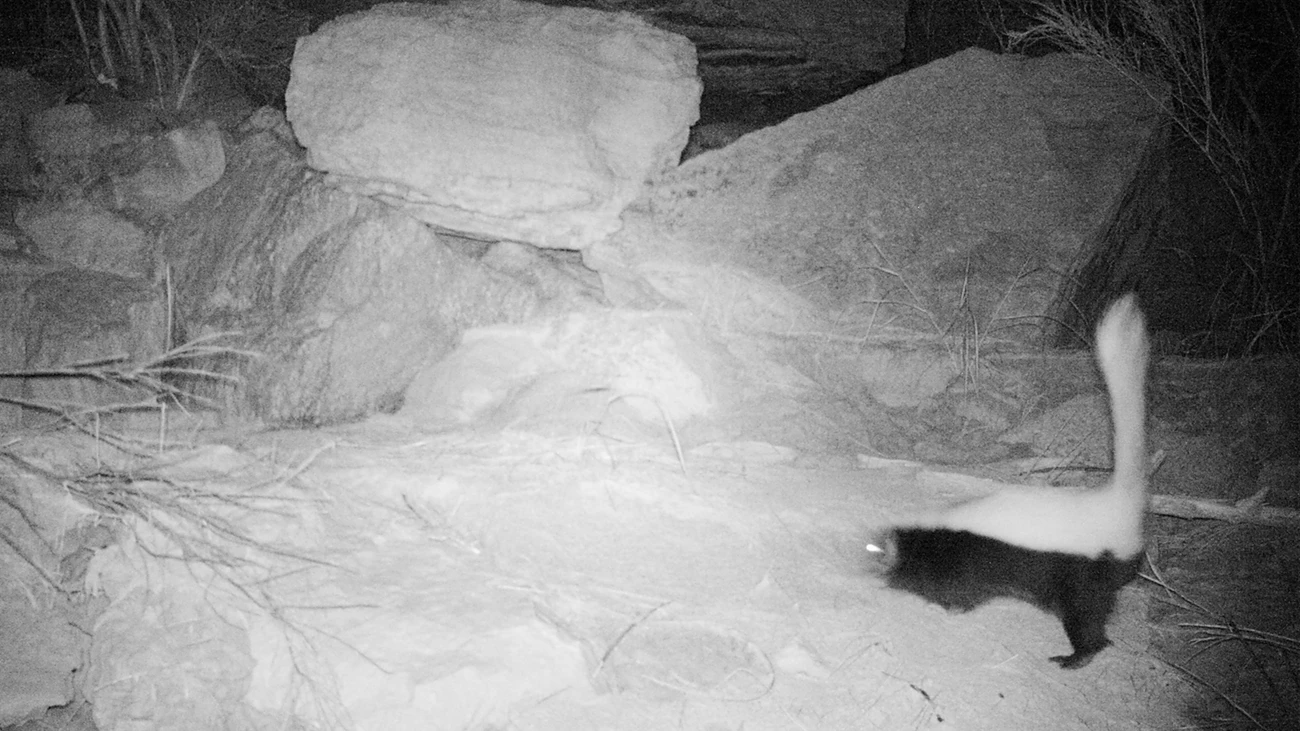
NPS Brandon Holton First seen in the Grand Canyon in 2012, the American hog-nosed skunk is considered a new species for Grand Canyon National Park. Seen along the Colorado River, little is known of the ecology of these animals within the Park. Current research using infrared trail cameras is aimed at determining the population size and distribution of these animals in riverine habitat along the Colorado River. Historically occupying southern Arizona, the presence of American hog-nosed skunks in the Grand Canyon is a hopeful sign for the species, especially in light of declines in other regions. Traditionally found from Central America to southern Colorado, populations of American hog-nosed skunks have declined in recently years due to habitat loss and fragmentation. This species has disappeared from places it inhabited, including Colorado, northern New Mexico, and Oklahoma. While the American hog-nose skunk is experiencing population declines, little is known about its total distribution and population size. Studying the hog-nosed skunks in the Grand Canyon will help park biologists better understand this new species for the Park. It will also help biologists across its North American range better understand the ecology of hog-nosed skunks, and how better to conserve this species. To study the hog-nose skunk in Grand Canyon, park biologists use a network of infrared trail-cameras. These cameras are set up in areas along the river that are believed to be preferred hog-nosed skunk habitat. 25 cameras in the network are triggered to take a photograph when an animal moves in front of them. Left in place for months or years, this camera network will collect thousands of photographs, including hog-nosed skunks and other important Grand Canyon species within the river corridor. Photographs will allow park biologists to determine areas along the river that are home to hog-nosed skunks, and estimate the number of hog-nosed skunks found along the Colorado River through Grand Canyon. Park biologists plan to monitor this population across multiple years, allowing biologists to better understand population trends of skunks in the Grand Canyon. Whether it is a new arrival to the Grand Canyon or has been overlooked in the past, the American hog-nosed skunk is a species undergoing change, and a pivotal species to Grand Canyon's ecosystem.
|
Last updated: May 19, 2016
